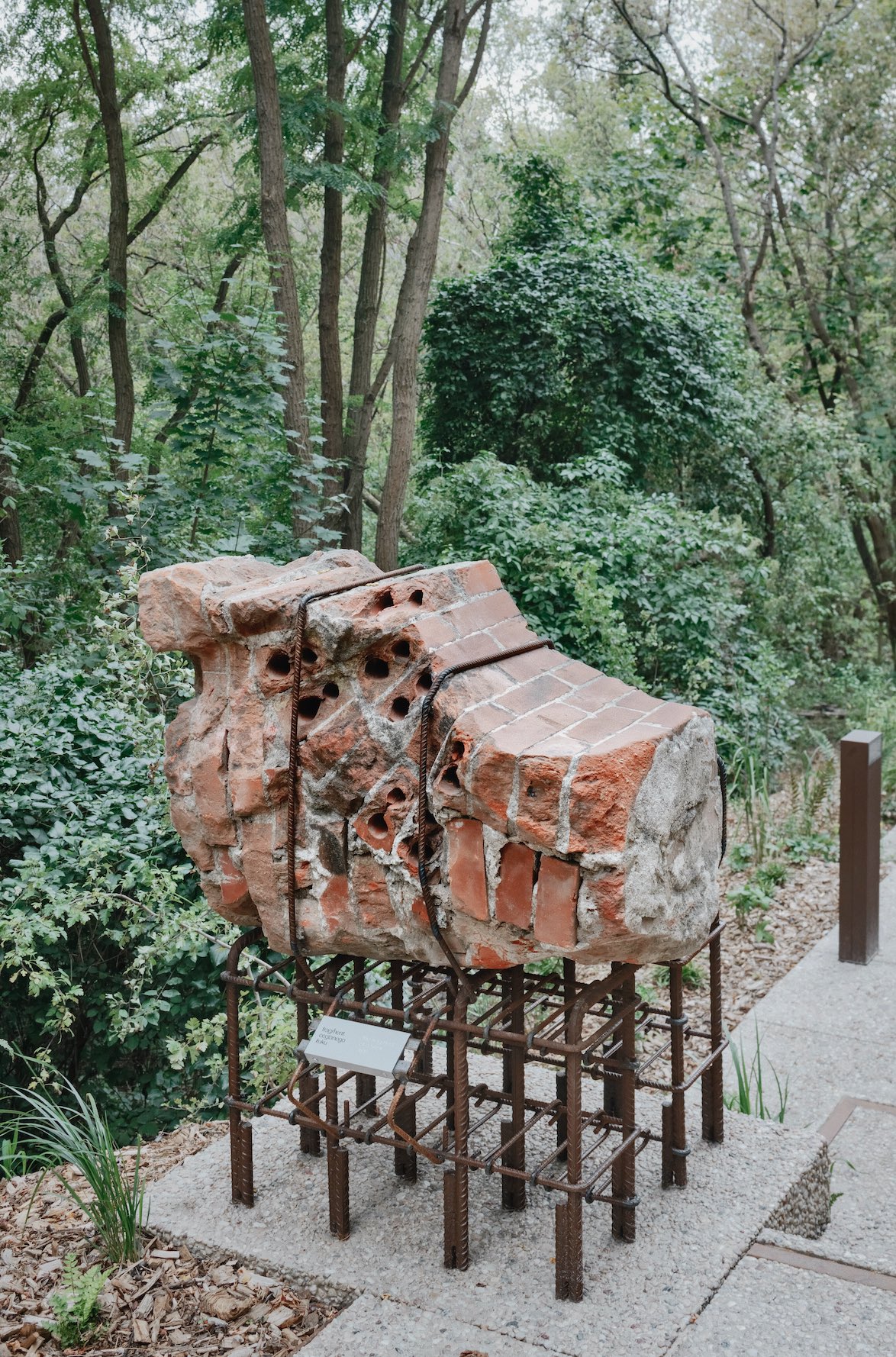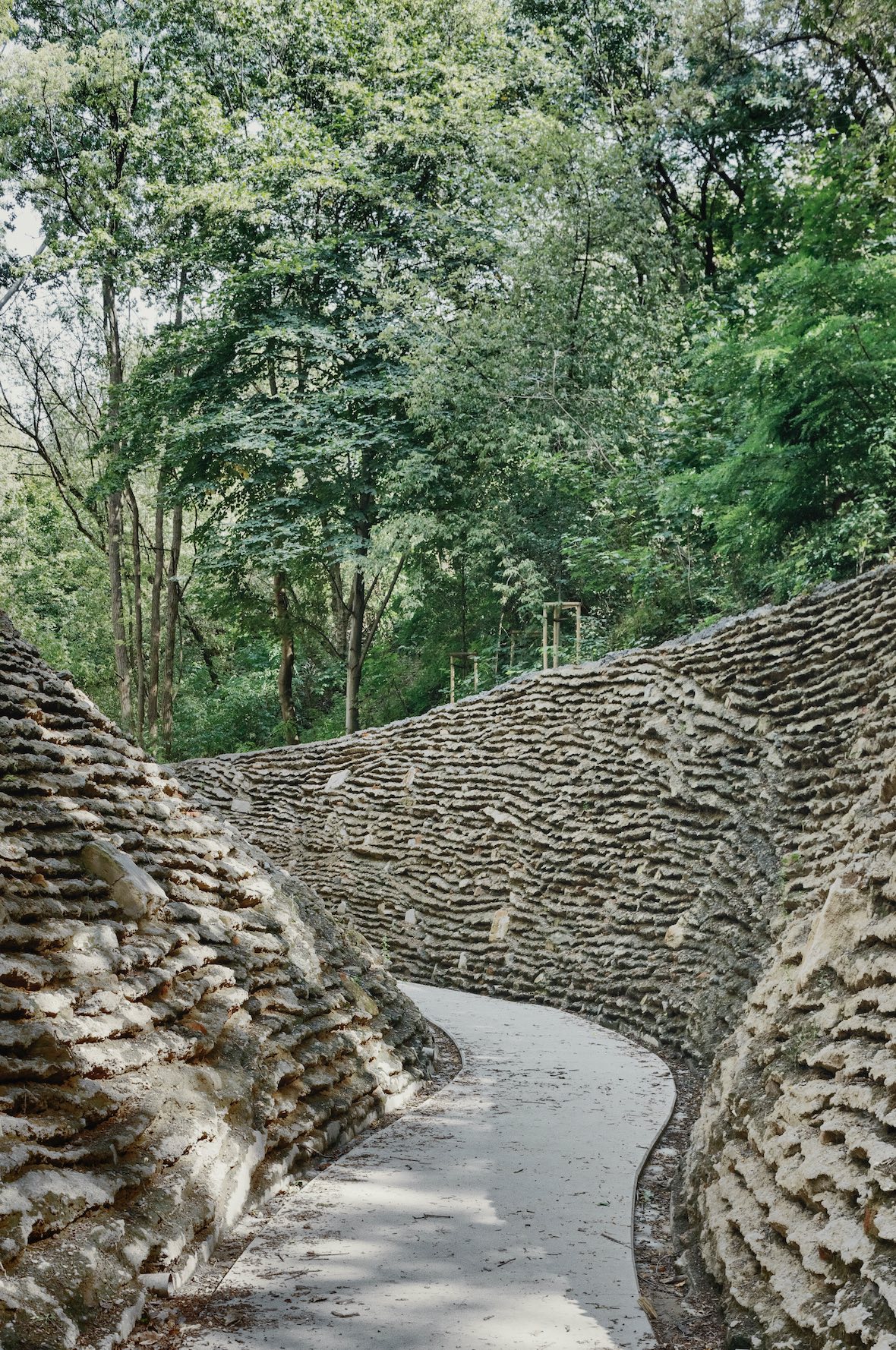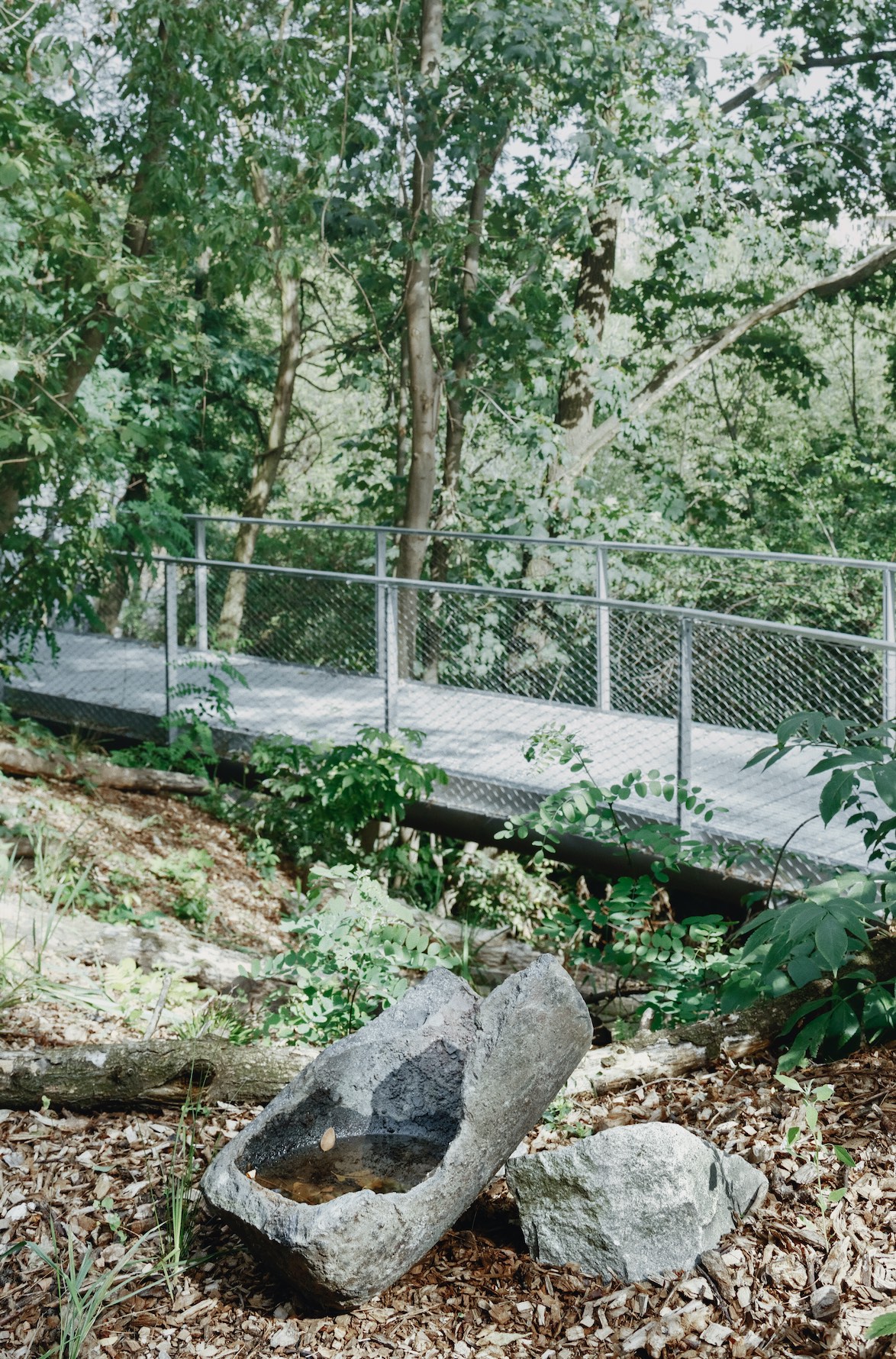The rubble and waste of a forgotten wartime mound find new life as an urban park in the heart of Warsaw’s Mokotów district
 Photography by Michał Szlaga featuring the Warsaw Uprising Mound Park
Photography by Michał Szlaga featuring the Warsaw Uprising Mound Park
Words by Jessica-Christin Hametner
In Warsaw’s leafy Mokotów district, a forgotten war site is undergoing a bold transformation. The Warsaw Uprising Mound Park is born from a collaboration between Polish architecture studio archigrest and landscaping firm topoScape, who use post-war rubble and innovative design principles to turn an abandoned site into a sprawling, biodiverse park.
Rising 35 meters above the city, this once-overlooked mound was originally an unplanned memorial. Following World War II, Warsaw’s urban landscape was destroyed, with 20 million cubic metres of debris accumulating in the city’s lakes and meadows, slowly forming hills of rubble.
Even amid the devastation, early photographs from 1947 reveal a city of resilience: residents repurposed bricks to create rubble concrete, a waste material that helped rebuild Warsaw’s housing and infrastructure. Drawing on this resilient spirit and inspired by the city’s resourceful past, archigrest and topoScape have reimagined the 82,919 sq m site for a new generation.
 Photography by Michał Szlaga featuring a rubble concrete brick
Photography by Michał Szlaga featuring a rubble concrete brick
‘Veterans first marked this place as the Warsaw Uprising Mound in 1944,’ explains Maciej Kaufman of archigrest. ‘Suddenly, the perception of this place changed completely—it went from a landfill to a symbol of remembrance,’ shares Kaufman. Over the next 20 years, the site lay mostly forgotten, with visits reserved for the Warsaw Uprising anniversary. When Kaufman’s team won the competition in 2019, they set out to reintroduce the site to the city, reworking the mound’s rugged history into an accessible and sustainable park.
archigrest and topoScape’s ambition was symbolic and experimental: to create a “living monument” that honours its past. ‘The idea was to keep everything we found here,’ continues Kaufman, ‘to work with what was left behind—weeds, bowls, floor tiles. Because this site is a piece of heritage, we adapted all the material resources we found.’ Embracing the area’s raw landscape, the team introduced footbridges and passageways to soften the journey up and over the mound, creating a park that beckons the city’s residents to walk, pause and reflect. Every turn reveals something new—secluded groves, playgrounds for children and viewpoints over old and new Warsaw.
The site’s vegetation played a key role in the landscaping and overall commitment to reuse. Working closely with ecologist Piotr Sikorski, the designers mapped a planting strategy that integrated existing flora with new species of native plants, reintroducing herbs and shrubs while also strengthening Warsaw’s ecological network. ‘This doesn’t look like a typical park,’ explains Magda Wnęk of topoScape, who views the design as more forest than park. ‘Invasive plants had taken over the land, but we’re seeing native ones returning now, sprouting under trees, so the landscape is already changing.’
 Photography by Michał Szlaga featuring a concrete wall that’s growing moss after the architects used a natural mixture containing yogurt
Photography by Michał Szlaga featuring a concrete wall that’s growing moss after the architects used a natural mixture containing yogurt
To increase biodiversity, the architects created habitat where there was none before. Dead wood, a key component for enhancing the biodiversity of forest ecosystems by up to 50-60%, offers diverse microhabitats for plants and animals. But it also acts as an “eco-sponge”, explain the designers, collecting rainwater and slowly releasing it back into the soil. ‘It’s a big experiment,’ admits Wnęk. ‘We don’t know exactly what’s in the soil; there might be an old tire or a large block of concrete.’
This unpredictability of growth has brought a wild beauty to the park and deepened its impact as a living memorial. On concrete walls, the team cultivated moss by using a mixture of moss and yogurt (or kefir), which speeds up the weathering process and encourages lichen, a type of organism that consists of an alga. Over time, this living layer of moss alters the surface’s pH, inviting a variety of plant life to spread across the site.
Similarly, when Warsaw was left in ruins after World War II, life began to develop on the new and bare rubble. While rocks, boulders and stones are not typical places for life, lichens, microorganisms and weathering processes can create soil. This allows other plants, such as ferns or shrubs, and ultimately trees, to grow—a process known as ecological succession. ‘The plants growing here were the first inhabitants of Warsaw,’ ponders architecture historian Aleksandra Kędziorek, who reflects on how the park captures a shift in Warsaw’s architectural approaches. ‘For years, we followed other cities’ models, but now we’re discovering what makes us unique. This natural regeneration is in our DNA.’
 Photography by Michał Szlaga featuring the steps of the Warsaw Uprising Mound Park alongside found objects and materials
Photography by Michał Szlaga featuring the steps of the Warsaw Uprising Mound Park alongside found objects and materials
The rugged, unpolished aesthetic may have taken some residents by surprise and the team worked to introduce the public to ‘rubble aesthetics’ and its environmental benefits through guided tours and discussions. At the entrance, an outdoor installation enhances the educational potential of the park, with historical narratives woven into the natural setting.
Along the heritage and nature trails, two exhibitions by Adam Przywara and Kasper Jakubowski, embed climate and nature into learning, using the mound as a case study in regeneration and giving visitors a space to ponder the layers of history and ecology beneath their feet.
‘We anticipated the roughness would be unusual,’ explains Marcin Maraszek, ‘so we focused on showing people that harmonised design is good for the environment, and I think people understand that. It might not look good, but it works.’ The park has gradually won admiration not only as an innovative green space but also as a sustainable model—most recently, it was awarded the European Prize for Urban Public Space.
 Photography by Michał Szlaga featuring the Warsaw Uprising Mound Park
Photography by Michał Szlaga featuring the Warsaw Uprising Mound Park
For Kaufman and Wnęk, the project is personal; their own families experienced the Warsaw Uprising, and the connection to this history brought their professional sensibilities into a new focus. Rather than controlling the landscape or creating a manicured park, the designers let nature take the lead.
Standing on the mound today, one can see across Warsaw—the history and the new city skyline side by side. ‘I stand here on the old city and look out towards the new city,’ says Wnęk. ‘And I can’t even recognise the rubble city in the photographs of my grandparents’ albums anymore. But being here, I understand why it looks so different now.’
Inviting both reflection and connection, this thoughtful regeneration project demonstrates the innovative ways in which rubble can be used to rebuild a city. The Warsaw Uprising Mound Park is a testament to Warsaw’s resilience, showing that the city’s strength lies not in stone, but in the life that rises from the ashes.
Get a curated collection of design and architecture news in your inbox by signing up to our ICON Weekly newsletter

















